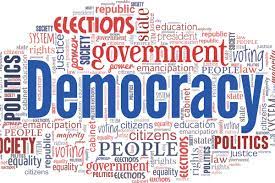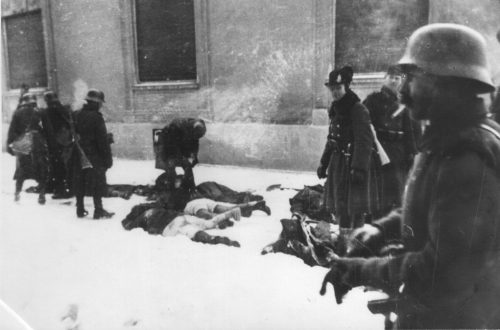I thought there may be some readers of this blog who would enjoy the article I recently dug out of the vaults. Below I enclose an extract:
Are Communism, Fascism Alike?
William Henry Chamberlain
Wall Street Journal, October 20, 1947, p.4.
A quickwitted woman college professor recently described an exchange of repartee with a Red sympathizer among her students.
“You can’t talk about Nazism and Communism as if they were alike,” protested the student.
“Oh, but I can,” replied the professor, “if they are alike.”….
As regards professed ultimate purpose, there is a difference between communism as expounded by Marx, Lenin and Stalin, and fascism as expounded by Mussolini and Hitler. Communism looks forward to a world social revolution which is to abolish capitalism and usher in the millenium [sic]. Hitler and Mussolini thought in terms of racial and national megalomania.
There is a difference here, but there is also an element of similarity. For regimes animated by such grandiloquent dreams are not likely to be reliably good neighbours of countries which do not fall in with their aspirations.
Another difference may be seen in the fact that communists in Russia and elsewhere, beat the drums for class hatred, whereas fascists have stressed race and national hatred. But here again one is struck by the fact that hatred, of one kind or another, figures so prominently in the thinking of both regimes. And the Soviet communist claim to be exempt from racism is wearing a little thin when one considers the implications of such actions as the blotting out of several ethnic groups in the Soviet Union (the Volga Germans, the Crimean Tartars, the Kalmyks and others) who were regarded as lacking in loyalty in the late war.
Eight Similarities Listed
In the matter of everyday administrative practice resemblances between these two totalitarian systems are far too numerous and striking to be dismissed as accidental or superficial. Eight of the more important of these resemblances may be listed as follows:
1. The supposedly infallible Leader who may not be criticized, who must always be surrounded with the thickest incense of flattery.
2. The single ruling party, which tolerates neither criticism nor organized opposition and really amounts to a permanent governing class.
3. Government by a mixture of unlimited propaganda and unlimited terrorism. Those subjects of a totalitarian state who are too intelligent to be taken in by the propaganda, are intimidated and effectively silenced by the terror. The propaganda is made unlimited by exclusive government control of the press, the schools, the radio, of every agency of instruction and information.
4. Complete absence of the rule of objective law, and of safeguards for the individual against the arbitrary violence of the state. Of course there is the code of law in the Soviet Union, as there were laws and law courts in Nazi Germany and fascist Italy. But on any suspicion of opposition to the government the political police under all these regimes could act on its own discretion. As a journalistic associate once said in Moscow:
“There is no habeas corpus in this country. But they have a pretty effective substitute for it. One might call it: habeas cadaver.”
5. Widespread use of slave labour. This has prevalent in the Soviet Union since 1929 and was practised on a large scale in Nazi Germany during the war.
6. Complete state control of the economy.
7. An incurable desire to carry on subversive intrigues in foreign lands.
8. An attitude of bellicose suspicion toward the outside world. Perhaps the most extreme expression of this attitude is the recent Soviet decree forbidding marriage between Soviet citizens and foreigners.
Update
For more on this subject, some may recall the 1939 letter to The Times that I used for a post in this series:
TWO IDEOLOGIES: SIMILARITIES BETWEEN THEM, COMMUNISM AND NAZISM IN SYMPATHY


